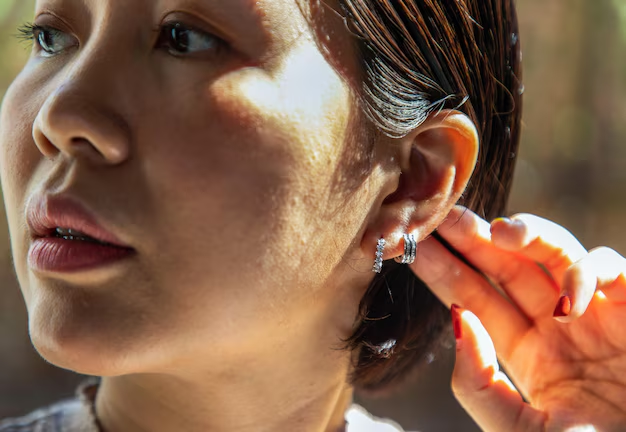How to Care for Earrings That Cause Ear Infections: Your Ultimate Guide
There's a good chance you've encountered an ear infection from earrings at some point, whether you're a long-time accessory lover or new to the world of ear adornments. These infections can range from mildly annoying to downright painful, potentially turning something as simple as wearing earrings into a major headache. But don't fret—there are practical ways to identify, address, and prevent these pesky problems. Let's delve into the comprehensive steps and precautions you can take to enjoy your earrings without the worry of ear infections.
What Causes Ear Infections from Earrings?
Before diving into how to treat an ear infection, it’s crucial to understand what causes them. Not all ear infections from earrings are the same, but here are some common factors:
- Poor Hygiene: Not cleaning your earrings or piercings regularly can allow bacteria to thrive.
- Allergic Reactions: Some metals, like nickel, are common allergens.
- Tight Fittings: Earrings that are too tight can cut off airflow and irritate the skin.
- Improper Piercing Technique: An unsterilized piercing environment or equipment increases infection risk.
- Use of Non-Sterile Materials: Using non-sterile materials for piercing or aftercare can introduce harmful microbes into the wound.
Signs of an Ear Infection: When to Pay Attention
Recognizing the signs of an ear infection early can help you take timely action. Look out for these symptoms:
- Redness and Swelling: Initial signs of irritation, usually around the piercing site.
- Pain or Tenderness: Discomfort, especially when touching the area.
- Pus or Discharge: Signs of infection often include yellow or green pus.
- Warmth: The area may feel more heated than usual.
- Itching or Burning: Allergic reactions often start with itchiness.
If symptoms persist or worsen, consulting a healthcare professional for advice is always a wise step.
Cleaning and Care: Essential Steps to Soothe and Heal
For minor issues, simple cleaning and care can go a long way. Here’s how to promote healing:
Wash Your Hands: Before touching or cleaning your ear, ensure your hands are clean.
Clean the Area: Use a saline solution or a gentle antiseptic recommended for piercings. Avoid alcohol or hydrogen peroxide, as these can dry out and irritate the skin.
Remove Earrings Temporarily: If possible, give your skin a break. However, avoid removing them if your piercings are very new or you suspect that the earrings are embedded.
Apply a Warm Compress: A warm, damp cloth can ease pain and promote drainage.
Keep Dry: After cleaning, make sure the area is dry, as moisture can harbor bacteria.
Materials Matter: Choosing the Right Earrings
Choosing hypoallergenic or high-quality materials can alleviate and even prevent irritation.
- Hypoallergenic Metals: Consider platinum, titanium, or surgical-grade stainless steel.
- Avoid Nickel: It’s often the culprit in allergic reactions.
- Gold and Silver: Opt for 14k gold or higher, and sterling silver, provided you’re not allergic.
When to Consult a Professional
While minor infections can often be managed at home, there are times when professional intervention is necessary.
- Severe Pain or Swelling: Indicates a more serious infection that may need medical treatment.
- Fever: A possible sign of a more serious infection.
- Persistent Symptoms or Allergy: Professional advice can help determine whether an allergy or something else is at play.
Preventative Care: Best Practices for Infection-Free Piercings
Prevention is key when it comes to ear infections from earrings. Here are some precautionary measures:
- Piercing Care: Ensure you get your piercings done by a reputable professional who follows strict hygienic practices.
- Earring Hygiene: Clean your earrings regularly, especially after wearing them for prolonged periods.
- Routine Check-Ups: Regular ear checks can catch infections early.
- Avoid Overuse: Give your ears occasional breaks from earrings to allow the skin to breathe.
Comfortable and Fashionable: Combining Safety and Style
Who says you can’t prioritize your health while looking good? Safe can absolutely mean stylish.
- Explore Clip-Ons and Alternatives: For those highly sensitive to metals, try clip-ons or magnetic earrings.
- Stay Updated on Trends: Fashion rotates in trends, and alternative accessories can sometimes gain popularity.
Embracing Ear Care: A New Fashion Essential
Incorporating earrings into your daily routine requires attention and care, but it shouldn’t be a source of ongoing frustration. With the right practices, you can quickly address infections and even prevent them altogether, enabling you to wear your favorite accessories with confidence and ease.
Key Takeaways:
- 🧼 Maintain Hygiene: Always clean your earrings and piercing sites regularly.
- 🔬 Opt for Safe Materials: Choose hypoallergenic metals to avoid allergic reactions.
- 🩺 Seek Professional Help: Don’t hesitate to consult a healthcare professional if symptoms persist or worsen.
- ⏲ Give Your Ears a Break: Remove earrings regularly if possible, to allow for airflow and reduce irritation.
- 🛡 Be Proactive: Follow preventative measures to avoid potential infections.
🌟 With proper care and attention, ear infections from earrings can be a rare disruption to your style statement. Shine on with confidence!

Related Articles
- Are Ear Infections Contagious
- Can Adults Get Ear Infections
- Can Amoxicillin Treat Ear Infections
- Can An Ear Infection Cause a Sore Throat
- Can An Ear Infection Cause Diarrhea
- Can An Ear Infection Cause Head Pain
- Can An Ear Infection Cause Jaw Pain
- Can An Ear Infection Cause Teeth To Hurt
- Can An Ear Infection Cause Vomiting
- Can An Ear Infection Heal On Its Own